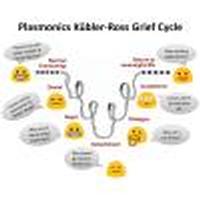当前位置:
X-MOL 学术
›
Adv. Opt. Photon.
›
论文详情
Our official English website, www.x-mol.net, welcomes your
feedback! (Note: you will need to create a separate account there.)
Losses in plasmonics: from mitigating energy dissipation to embracing loss-enabled functionalities
Advances in Optics and Photonics ( IF 25.2 ) Pub Date : 2017-10-23 , DOI: 10.1364/aop.9.000775 Svetlana V. Boriskina , Thomas Alan Cooper , Lingping Zeng , George Ni , Jonathan K. Tong , Yoichiro Tsurimaki , Yi Huang , Laureen Meroueh , Gerald Mahan , Gang Chen
Advances in Optics and Photonics ( IF 25.2 ) Pub Date : 2017-10-23 , DOI: 10.1364/aop.9.000775 Svetlana V. Boriskina , Thomas Alan Cooper , Lingping Zeng , George Ni , Jonathan K. Tong , Yoichiro Tsurimaki , Yi Huang , Laureen Meroueh , Gerald Mahan , Gang Chen

|
Unlike conventional optics, plasmonics enables unrivalled concentration of optical energy well beyond the diffraction limit of light. However, a significant part of this energy is dissipated as heat. Plasmonic losses present a major hurdle in the development of plasmonic devices and circuits that can compete with other mature technologies. Until recently, they have largely kept the use of plasmonics to a few niche areas where loss is not a key factor, such as surface enhanced Raman scattering and biochemical sensing. Here, we discuss the origin of plasmonic losses and various approaches to either minimize or mitigate them based on understanding of fundamental processes underlying surface plasmon modes excitation and decay. Along with the ongoing effort to find and synthesize better plasmonic materials, optical designs that modify the optical powerflow through plasmonic nanostructures can help in reducing both radiative damping and dissipative losses of surface plasmons. Another strategy relies on the development of hybrid photonic-plasmonic devices by coupling plasmonic nanostructures to resonant optical elements. Hybrid integration not only helps to reduce dissipative losses and radiative damping of surface plasmons, but also makes possible passive radiative cooling of nano-devices. Finally, we review emerging applications of thermoplasmonics that leverage Ohmic losses to achieve new enhanced functionalities. The most successful commercialized example of a loss-enabled novel application of plasmonics is heat-assisted magnetic recording. Other promising technological directions include thermal emission manipulation, cancer therapy, nanofabrication, nano-manipulation, plasmon-enabled material spectroscopy and thermo-catalysis, and solar water treatment.
中文翻译:

等离子激元的损失:从减轻能量耗散到拥抱启用损失的功能
与传统光学不同,等离子体激元能够实现无与伦比的光能集中,远远超出光的衍射极限。然而,该能量的很大一部分以热量的形式消散。等离子损耗是开发可与其他成熟技术竞争的等离子设备和电路的主要障碍。直到最近,他们仍然在很大程度上将等离子体的使用保留在一些损失不是关键因素的利基领域,例如表面增强拉曼散射和生化传感。在这里,我们基于对表面等离子体模式激发和衰减的基本过程的理解,讨论了等离子体损失的起源和各种最小化或减轻它们的方法。随着不断努力寻找和合成更好的等离子体材料,通过等离子体纳米结构修改光能流的光学设计有助于减少表面等离子体的辐射阻尼和耗散损耗。另一种策略依赖于通过将等离子体纳米结构耦合到谐振光学元件来开发混合光子 - 等离子体器件。混合集成不仅有助于减少表面等离子体的耗散损耗和辐射阻尼,而且还使纳米器件的被动辐射冷却成为可能。最后,我们回顾了热等离子体的新兴应用,这些应用利用欧姆损耗来实现新的增强功能。等离子激元的损耗使能新应用的最成功的商业化例子是热辅助磁记录。其他有前景的技术方向包括热发射操纵、癌症治疗、
更新日期:2017-10-23
中文翻译:

等离子激元的损失:从减轻能量耗散到拥抱启用损失的功能
与传统光学不同,等离子体激元能够实现无与伦比的光能集中,远远超出光的衍射极限。然而,该能量的很大一部分以热量的形式消散。等离子损耗是开发可与其他成熟技术竞争的等离子设备和电路的主要障碍。直到最近,他们仍然在很大程度上将等离子体的使用保留在一些损失不是关键因素的利基领域,例如表面增强拉曼散射和生化传感。在这里,我们基于对表面等离子体模式激发和衰减的基本过程的理解,讨论了等离子体损失的起源和各种最小化或减轻它们的方法。随着不断努力寻找和合成更好的等离子体材料,通过等离子体纳米结构修改光能流的光学设计有助于减少表面等离子体的辐射阻尼和耗散损耗。另一种策略依赖于通过将等离子体纳米结构耦合到谐振光学元件来开发混合光子 - 等离子体器件。混合集成不仅有助于减少表面等离子体的耗散损耗和辐射阻尼,而且还使纳米器件的被动辐射冷却成为可能。最后,我们回顾了热等离子体的新兴应用,这些应用利用欧姆损耗来实现新的增强功能。等离子激元的损耗使能新应用的最成功的商业化例子是热辅助磁记录。其他有前景的技术方向包括热发射操纵、癌症治疗、







































 京公网安备 11010802027423号
京公网安备 11010802027423号